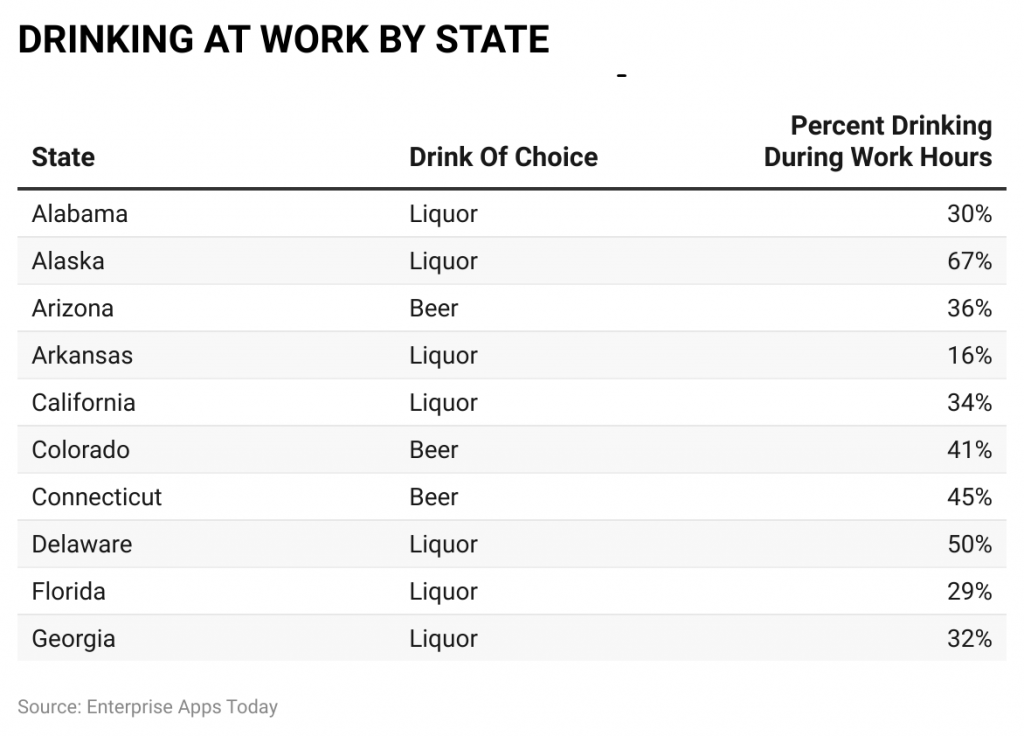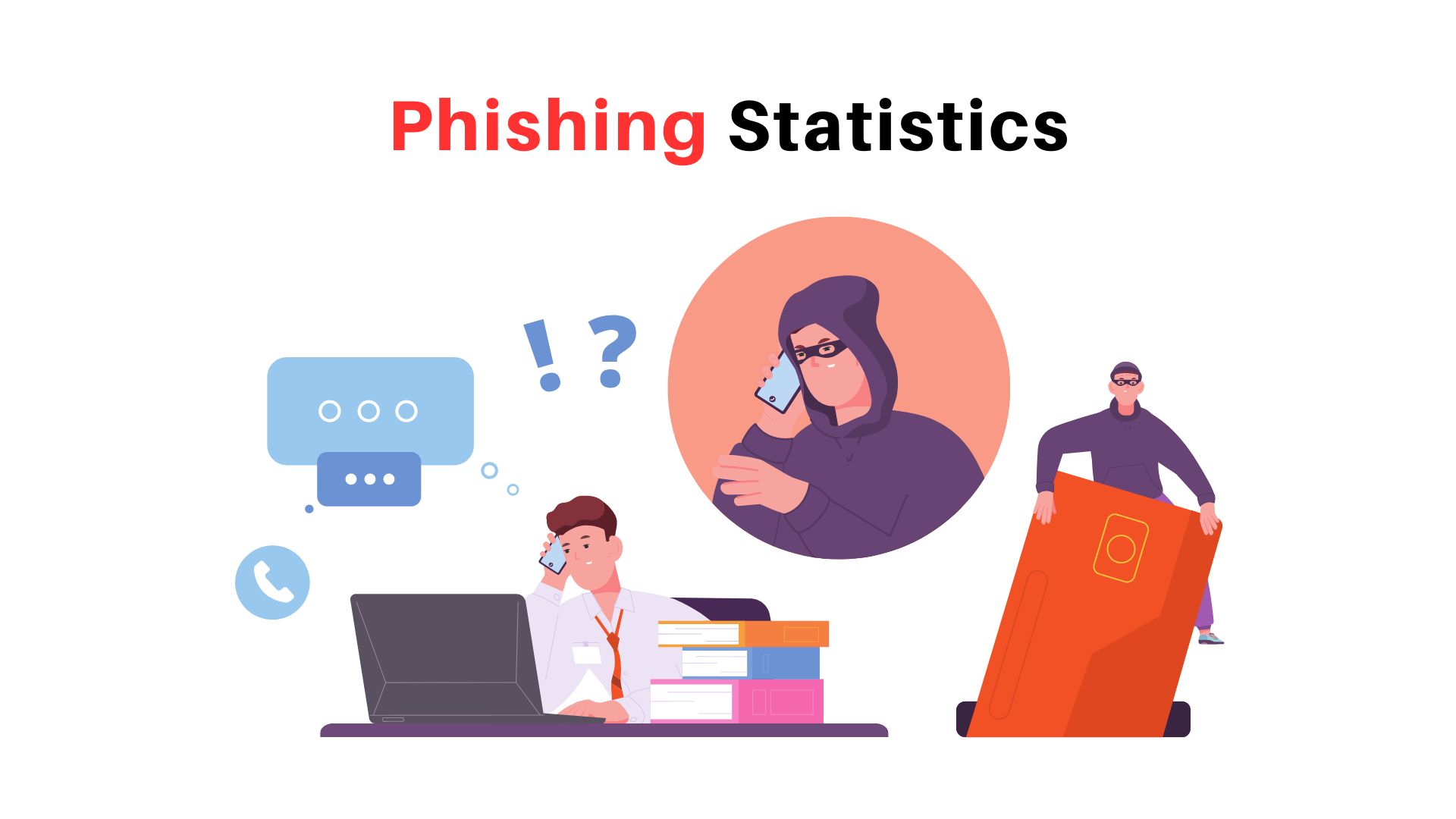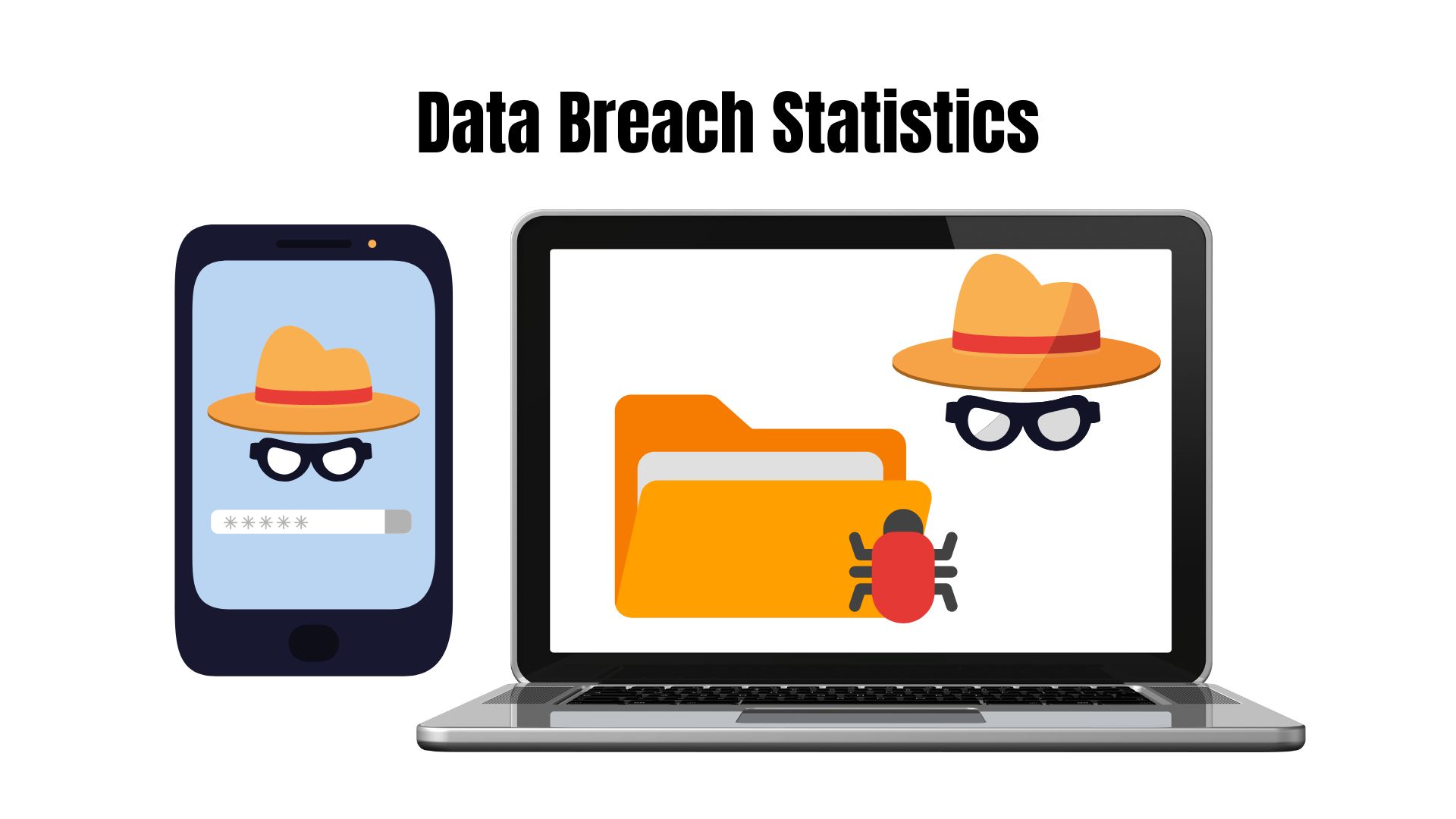[Alcoholic Drinks] Drinking At Work Statistics 2023 – Facts and Trends
![[Alcoholic Drinks] Drinking At Work Statistics 2023 – Facts and Trends](https://www.enterpriseappstoday.com/wp-content/uploads/2022/09/Drinking-At-Work-Statistics.jpg)
Page Contents
Introduction
Drinking at work Statistics: Drinking at work seems impossible right? But today’s trend has already been introduced into the markets. Many companies are allowing their employees to drink during working hours but with a limit. Drinking here refers to alcoholic drinks. There are n number of alcoholic drinks referred to as vodka, beer, whiskey rum, and wine that can add fun to hectic work routines.
The following Drinking at Work statistics with huge numbers clearly state the dangerous side effects on health during drinking at work. As people tend to enjoy drinking also other times of the day, drinking at work adds up more quantity per day. Even though the recent trend where employees are allowed to work from home does not reduce drinking during work hours.
Drinking At Work Statistics (Editor’s Choice)
- In the companies from the United States of America, studies from Alcohol Rehab guide show that, people more than legal age, i.e., 18 years, out of which 65% resulting to 123 million employees drink alcohol at work.
- Around 35% of colleagues shows a sign of drinking during working hours in the United States of America.
- 53% of the employees who are working remotely, out which have agreed to regular drinking during work resulting in up to 32%
- Employees resort to 6% drink until it becomes harmful at once, a time in a month. Whereas, according to Workplace mental health statistics, 3% do a similar activity of drinking more than once a week.
- Authors: Well, it depends on a person, who tends to work for hours together while writing has their backs on alcoholics’ drinks rather than a mug of coffee.
- The national health system spends around 3.5 billion on the treatment of people facing problems from addiction to alcohol (Public Health England)
- The rise in alcoholic consumption during pandemic days caused more deaths due to liver damage.
- During the strict pandemic days, 22% of the employees overly stocked alcoholic beverages at home
- In the United States of America, around 36% of the men who are working from home as well as 26% of the women have resulted from drinking during work hours.
- As of 8.9 million employees drink during work in the United States of America.
- On average, the after-work drinks spending in the United States of America America is $3,000 a year.
- Employees who drink at work are 3.5x more likely to experience accidents involved during work hours.
You May Also Like To Read:
- Alcoholism Statistics
- Most Expensive Alcoholic Drinks
- Most Expensive Tequilas
- Most Expensive Champagne Bottles
General Drinking At Work Statistics
Today’s work culture is causing people more serious health issues. Even if a person is a non-drinker he is affected by work ethics. On the other hand, people who drink on a daily basis, even though the quantity is low, it harms their health. More to this, companies are bringing a drinking-at-work culture to the offices to retain employees. The reality behind this is causing employees serious health issues and incurring medical expenses. A genuinely hard-working employee who works for a salary mostly has a lot of work-related stress therefore, he might get addicted to alcoholic drinks before, during, and after office hours. The following statistics show a different aspect of today’s working culture.
- In Australia, 11% of workplace accidents are resulted from overdrinking at the offices (ADF)
- During those pandemic years with valid numbers of market research, 34% of the employees drank alcohol every day during office hours.
- Massachusetts, South Dakota, and Arkansas have the lowest percentage of drinking at work statistics resulting in 15-6% (Zippia).
- On the other hand, Alaska, Maine, and Mexico counted up to 67%, 60%, and 56% respectively.
- 53% of the employees who are working remotely, out which have agreed to regular drinking during work resulting in up to 32%
- Around 27% of the employees agree that stress levels at work make them drink more.
- Considering the other professions people working in mining, hospitality, and other industries have 17.5%, 11.8%, and 11.5% drinking habits every day (alcohol.org).
- Whereas employees in the healthcare sector have 4% of drinking habits and insurance and financial sectors result in 7.4%.
- According to alcohol.org, every lawyer out of five has a drinking problem.
- People with bartending jobs are more likely to die from alcoholic-related issues resulting in 2.33 times than a normal person (Alcohol Rehab guide).
- People with regular drinking habits from various sectors such as shoe machine operators, roofers, painters, cooks, and sailors resulted in 1.87%, 1.85%,1.75%, and 1.75% for each sector respectively.
- Employees who drink during working hours have 3.5% of involvement in work-related accidents.
- It has been observed that people who drink regularly, follow a pattern of absenteeism, taking a holiday on Mondays, and Fridays at a regular level.
- It has also been observed that the day after the salary is also observed as the day of absenteeism.
- Drinking at work could result in a loss of attentiveness, a low level of decision-making, an increase in accidents, and causing trouble for other office employees.
- In the United States of America, it has resulted in a 20% of non-alcoholic employees who faced dangers, accidents, or any work-related issues only because of their alcoholic colleagues.
- Around 35% of colleagues shows a sign of drinking during working hours in the United States of America.
- The national health system spends around 3.5 billion on the treatment of people facing problems from addiction to alcohol (Public Health England)
- Furthermore, considering the crime around 11 billion euros are spent to safeguard such situations
- The total costs the UK is adding to its fund is around 21 billion euros.
- Nowadays, the government has planned programs for such people who lose their jobs due to alcoholic conditions
- When it comes to treating people with alcoholic disorders, they have more medical expenses than those nonalcoholic workers.
- Healthcare expenses are around $25 billion almost a year
- Companies in the United States of America need to spend around $33 billion to $68 billion per annum to treat people who have alcohol disorders.
- In the United States of America, companies run their own Employee Assistance programs to get back employees to normal and healthy routines.
- Around 50% of the employees who are working on a full-time basis have joined EAP programs
- Around 15% of the employees stated that they can easily drink at the office premises even if their boss is in front of them.
- On the other hand, 10% prefer to drink after work.
- Whereas more than 50% of the employees agree that, drinking alcohol at work causes disturbances.
- Considering the after-work drinks, around $,3000 is spent on drinks per person in the United States of America.
- PubMed NCBI states that people go to work after drinking resulting in 2.3 million.
- Around, 8.9 million employees resulting in 7.1% have started drinking alcohol during work.
- In the companies from the United States of America, studies from the Alcohol Rehab guide show that, people more than legal age, i.e., 18 years, out of which 65% resulted in 123 million employees drinking alcohol at work.
- On the other hand, considering unemployed people of the same age group but resulting to 53% drink alcohol.
- As a shocking result, the number of alcohol drinkers is higher when they are employed than when they are unemployed.
- Around 17 million people who are over the legal age bar have been diagnosed with alcohol use disorder.
- Employees resort to 6% drink until it becomes harmful at once, a time in a month. Whereas, according to Workplace mental health statistics, 3% do a similar activity of drinking more than once a week.
Types Of Jobs That Allow Drinking At Work
Recently, with an increasing percentage after the pandemic years, companies allowed their employees to drink at work. The following types of jobs are allowing their employees to drink at their will.
- Bartender: This is an obvious job, where the person has to taste their own drink. People being a bartender might enjoy drinking for hours but might slowly lose interest as this habit continues for a longer period of time.
- Liquor store employees: Employees at liquor stores might have the time of their lives if their managers allow them to drink during their shifts. Who knows an employee while arranging the bottles can invite their colleague to take a sip?
- Authors: Well, it depends on a person, who tends to work for hours together while writing has their backs on alcoholics’ drinks rather than a mug of coffee.
- Food critics and testers: people working in this category of course have to taste the quality of the drinks before it’s been manufactured.
- People from the media advertise the alcoholic beverages brands drink during their shooting as they have to show people how good it tastes.
Advantages and Disadvantages
Well! As every coin has two sides, drinking at work also has advantages and disadvantages. To consider both sides, a minimum level of consumption shall be taken into consideration. No company will allow any employee to drink more than a set level.
Advantages
- It increases attachment toward the company
- It can increase the productivity
- Drinking at work may result in employee retention
- It reduces stress
Disadvantages
- Sometimes things can go over the limit
- Not all employees support drinking at work, which might discourage them
- Could spread a negative working environment
- Might have a bad effect on the customers
- Drinking at work can be expensive in terms of the company sponsoring such beverages
Drinking At Work During Work From Home
Lat two pandemic years were tough for the people as it locked everyone inside the house. Even though the world learned the importance of technology and connectivity, it failed to please humans in terms of happiness. Every member of the family was stressed due to the workload. Many employers around the world made their employees do the donkey work just to utilize the whole day and work from home situation. This created a stressful situation for many individuals. Some individuals drank alcohol out of habit, but some drank to reduce the stress caused by the working situation. Some employees who never had a sip of such beverages started drinking them regularly. The following data shows the reality of drinking at work statistics during the pandemic years. This was a worldwide issue.
- In the United States of America, around 36% of the men who are working from home as well as 26% of the women result from drinking during work hours.
- People who work from home have problems with productivity in the offices resulting from continuous drinking issues.
- In the USA, 1 one in 3 people is used to drinking even working from home
- Around 32% of the employees said that they tend to be drinking more during the work-from-home structure at office times than elsewhere.
- During the strict pandemic days, 22% of the employees overly stocked alcoholic beverages at home
- 35% of the employees state that they have increased their drinking habits than before the pandemic period
- In the initial days of the lockdown of 2019, the total percentage of sales for alcoholic beverages increased.
- Nowadays working from home has become so common that people are stocking up with alcoholic beverages as their increased habits during the lockdown resulted in 9 out of 10 people drinking during working hours every day.
- Whereas 8 out of 10 people stated that they drink alcohol during working hours at least twice a week.
- Among all the alcoholic beverages, beer has the highest number of consumptions during work from home.
- During the year 2019, including the initial days of the pandemic, the United States of America estimated a total number of 8,000 people dying mainly due to overconsumption of alcohol
Drinking at Work by Choice of Drink
 (Source: zippia.com)
(Source: zippia.com)
As of 2023, nearly 50% of employees in the states of America are drinking during work hours, out of which the preferred drink is liquor. Beer has a moderate preference followed by wine.
Conclusion
From the above Drinking at Work statistics, it is clear that the numbers are rising year by year. It may be any reason which causes the employees to start drinking but it is hard to break that habit. Similarly, starting drinking at work policies may harm companies as, if employees get used to it, they may cause trouble. And even if the company decides to take back the drinking at work policy the percentage of employee retention will harm the company. At any time of the day or year, people will still drink alcoholic beverages at their convenience. Today’s overall work culture and the atmosphere around the person decide the percentage of drinking alcohol. Thus, in order to keep employees healthy, it is necessary to give them a break from drinking at work.
FAQ.
Some of the top companies named Zoosk, Pinterest, Mutual Mobile, Tequila Casa Dragones, Quantcast, and Her Campus allow drinking at work.
Employers that allow drinking at work trust their employees to drink responsibly. Allowing drinking at work improves relationships between colleagues, employees, and employers. However, drinking should be restricted to company parties and any events. It is not advisable to allow employees to drink while working.
Yes. Drinking at work is the most common reason behind accidents during work hours. As the work culture in the companies is drastically changing, new concepts are being introduced. Nowadays companies allow employees to drink at work. This way, the productivity will reduce and the capacity of decision-making will have a severe impact.

Barry is a lover of everything technology. Figuring out how the software works and creating content to shed more light on the value it offers users is his favorite pastime. When not evaluating apps or programs, he's busy trying out new healthy recipes, doing yoga, meditating, or taking nature walks with his little one.



